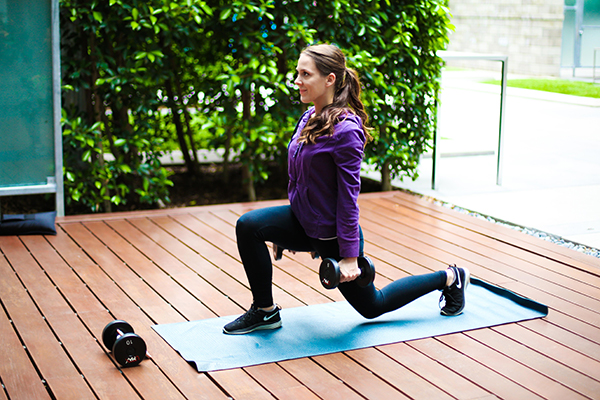7 Best Weight-Loss Tips If You Have a Lot to Lose

Trying to lose 50 pounds isn’t the same as trying to lose five — but that’s not necessarily a bad thing.
After all, immediate results tend to be a lot more dramatic in people who have more pounds to lose compared with those who are trying to trim a few.
That’s because the closer your body is to its “ideal weight,” the less apt it is to change. The further you are from that target, though, the more adaptable the body tends to be.
“Those first five pounds represent a much smaller percentage of your body weight when you have a lot of weight to lose,” explains Albert Matheny, M.S., R.D., C.S.C.S., a dietitian with ProMix Nutrition and co-owner of SoHo Strength Lab in New York City.
And, according to 2016 research published in Cell Metabolism, the first five percent of weight lost offers the greatest health benefit in people with obesity. Score!

Unfortunately, for many weight-loss warriors (show of hands?) those results quickly plateau. And it’s not for lack of motivation or dedication. It’s pure biology.
As you get closer to your goal, every “next five pounds” becomes a greater percentage of your body weight and therefore more difficult to strip away.
What’s more, and contrary to most people’s assumptions, the less you weigh, the slower your metabolic rate actually is. “A smaller engine burns fewer calories,” Matheny notes. Womp womp.
However, experts have found that, when people lose large amounts of weight — going, for instance, from 250 to 150 pounds, their metabolic rates don’t decrease to match up with those of other 150-pounders.
They actually decrease much further, working in direct opposition to continued weight-loss goals.
“When a person loses weight, the body senses the new weight as abnormally low or weight-reduced. The body will activate survival mechanisms to restore the lost weight by dropping metabolism,” says Ethan Lazarus, M.D., a board member of the Obesity Medicine Association.
“Several studies, including the recent study on ‘Biggest Loser’ participants, demonstrate a significant drop in metabolism and an increase in hunger persisting 6 years after the weight loss,” he adds.
Researchers with the National Institutes of Health found that, when looking at 14 people who had lost significant amounts of weight on the show, their resting metabolic rates (the number of calories they burn just chilling out) were about 500 calories lower than they should have been based on their weight, body composition, age, and gender. That is why, of those 14 people, 13 regained everything.
Research published in the New England Journal of Medicine shows that this metabolic adaptation, also called a metabolic penalty, is largely due to hormonal changes that occur during weight loss.
So, if you have a lot of weight to lose, how can you make sure that month by month, your weight loss gets easier, not harder? Follow these seven best weight-loss tips, straight from scientific journals and top obesity medicine specialists.

7 Best Weight-Loss Tips
1. Build confidence with “low-hanging fruit”
When it comes to weight loss, the first step tends to be the hardest one. Make it easier by starting with what Matheny calls “low-hanging fruit,” habits that are easily modifiable but can make a big difference in your weight.
These habits can include cooking more, taking the stairs at work, cutting back on your soda habit, or drinking a daily Shakeology to jump-start cleaning-eating habits.
Starting with these simple switches will do more than get you started; they will help keep you going. “Once they start losing weight, people feel more motivated and fired up for continued results,” Matheny says. “They realize that, yes, they can do this.”
Don’t know where to start? Try 2B Mindset, BODi’s new nutrition plan. Ilana Muhlstein, a registered dietitian nutritionist, helped create this program using her experience being more than 100 pounds overweight.
She lost those 100 pounds — and kept them off — by using a healthy approach to eating that lets you feel full and satisfied, while arming you with proven strategies that will help you coexist with food in real-world situations, satisfy cravings, and anticipate setbacks before they happen.
2. Pick the weight-loss strategy that is doable for you
Forget what diet everyone else is following. Choose the one that sounds easiest to you.
“Research has shown that the best diet for an individual is the one he or she will stick to, regardless of the macronutrient composition. Whether that’s South Beach, Atkins, Mediterranean, 5:2 fast, or Paleo, the diet that will work for you is the one you can follow with your lifestyle and preferences,” explains Wendy Scinta, M.D., M.S., director of Medical Weight Loss of New York and member of the Obesity Medicine Association.

3. Work out where you feel comfortable
Similarly, when it comes to exercise, confidence is key; a Medicine and Science in Sports and Exercise review found that confidence in your ability to be physically active on a regular basis is the highest predictor of how much you’ll exercise.
Unfortunately a lot of people, regardless of size, feel that they have to get “fit” before they can enter a gym. While that’s definitely not true, we understand how intimidating the gym floor can be.
That’s why working with a personal trainer, firing up the DVD player, or streaming BODi workouts in your living room comes in handy.
Building skills, such as coordination, agility, and flexibility, as well as confidence while you’re burning fat and building muscle can propel you to stick with exercise over the long term.
Make sure to discuss any physical limitations, joint problems, or mobility issues with your personal trainer or doctor before starting an exercise program.
4. Eat for satiety
“During weight loss, we have lower levels of the hormones the small intestine releases to help us feel satisfied, including GLP-1 and cholecystokinin, and higher levels of the hunger hormone ghrelin,” Lazarus says.
What’s more, he recommends eating protein and/or healthy fats first in each meal, since they trigger the release of these satiety hormones and help prevent overeating.
However, they take about 20 minutes to reach the small intestine and stimulate the endocrine release. Eat slowly and mindfully (no multitasking or watching TV during meals!) to make sure you’ll notice signs of fullness — and stop eating before you get stuffed.

5. Build muscle
Your greatest ally in your fight against metabolic penalty is muscle, Matheny explains. That’s because muscle is a major determinate, and the largest single modifiable factor, in setting your metabolic rate.
However, when people lose weight, especially large amounts of weight, it’s natural to lose some weight from muscle. Luckily, it is possible to avoid these losses, and actually build muscle while losing fat, Matheny says.
The key is performing regular resistance training and consuming adequate protein. BODi recommends consuming about .5 to .9 grams of protein per pound of body weight per day in order to lose weight while still building metabolically active muscle.
If you have a body-fat scale or body-fat caliper, weigh yourself or take your skinfold measurements regularly. Make sure that, as your overall weight decreases, your body-fat percentage doesn’t increase; this will help ensure that you are effectively building muscle.
If your body-fat percentage actually creeps up as you lose weight, it’s a sign that you need to up your muscle-building efforts.
6. Stay accountable
More accountability means more weight lost — and kept off, says Debra Nessel, R.D., C.D.E., with Torrance Memorial Medical Center in California. Luckily, there are plenty of research-backed ways to boost accountability and results.
For instance, results from the National Weight Control Registry — an ongoing study of more than 10,000 people who have maintained weight losses of at least 30 pounds — show that 75 percent of successful losers weigh themselves at least once a week.
Similarly, keeping a food and workout diary can increase your accountability to yourself and your goals, she says. You can also try reaching out to others, either in person or online, who are in similar places on their weight-loss journeys.
Research shows that social support is critical not just to initial weight loss but also to long-term results.
7. Switch up your workouts regularly
The body is excellent at adapting to handle your workouts. Over time, you’ll perform the same exercises more efficiently, meaning that, during week 10 of your workout program, you will burn fewer calories walking a mile than you did during week 1, regardless of your weight.
“If you get to a point in your exercise plan where your body isn’t changing, that means your body has adapted to the exercise stress that you are putting on it,” Matheny says. “You need to introduce a new stress to elicit further adaptations, aka results.”
To beat your body to the punch, he recommends changing key variables in your workouts — such as rest periods, load (i.e., the amount of weight you’re lifting), lifting pace, stance, or grip — or even rotating in new exercises when you notice your results start to wane.
The goal is to challenge your body consistently.
The Bottom Line
Losing the weight takes work; there’s no getting around that. But, armed with the right tips, you can totally do it. Just remember that you and your health are well worth the work.
